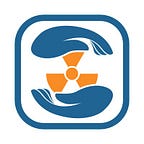Early days-Kilo voltage Treatment Machines: Radiotherapy Machines #2
Kilovoltage treatment machines were the workhorses of radiotherapy in the 1920s to 1960s. We owe a lot to these devices for developing the practice of radiotherapy. And now when modern radiotherapists, medical physicists, and radiation oncologists look back at these devices they come across as very simple devices compared to our modern equipment. Think of the brick phone compared to today’s smart phone. And now think that that happened over 30 years. The improvement to radiotherapy equipment has evolved over the last 100 years!
Kilovoltage treatment machines were the first mass production of machines used to produce radiation for radiotherapy. The machines themselves used various methods to accelerate electrons, a necessary component of creating photon ionizing radiation. Van der graaf generators and betatrons where some of the machine used, but by far, x-ray tubes where the most popular machine.
X-ray tubes require little more than a source of high voltage to run. The tube is basically a capsule which has a vacuum in it, inside this is the filament used to create electrons through thermal emission. Those electrons are accelerated and smashed into a target to create x-rays through bremsstrahlung.
World War I pushed the development of x-ray tubes onto the main stage. X-ray equipment was used in field hospitals during the war. American and French troops become some of the first radiologists, being trained to take x-ray images of wounded soldiers on the battlefield. After being proven to be useful on the front lines, well at least proven for radiology, the demand for the technology increased. Many physicians sought to get there hands on X-ray machines for their practices.
The study of how radiation behaved and worked continued between world war one and two. Physicists and biologists continue to work with engineers to develop better technologies and methods involving radiation devices. There was an ever increasing effort to develop accelerators that could produce higher energy photons. Moving from 10s of kV to 100s of kV.
X-rays in most radiology machines are still produced by an x-ray tube. X-ray tubes in CT scanners and chest x-ray machines. Modern x-ray tubes have come along way from the 1940s and 1930s. They now have spinning targets and liquid cooling systems to disperse and remove heat. Allowing them to run continuously for longer times without melting themselves to bits. They have sophisticated monitoring circuits to maintain stable current and voltage. Better and more stable high voltage generators for the acceleration of electrons. And more safety systems built into them.
X-ray tube machines are also still being used for radiotherapy treatments, but mainly only for skin and superficial treatment sites. They are not as common as they once were. The overall treatment systems are also becoming more sophisticated. Being able to collimate the radiation beam to smaller sizes, allowing targeting of specific areas. They are even used in intraoperative procedures, a technique known as intraoperative radiotherapy surprisingly. A treatment which involved radiotherapy delivery of a target inside the body which is made accessible through surgically allowing the target to be exposed and avoiding any healthy tissue.
In the 1950s and 1960s the biggest change to radiotherapy for the previous 40 years occurred. The Cobalt 60 machine and Linear accelerator were introduced, producing photons that were more penetrating and with energies within the megavoltage range.
Thanks for reading and don’t forget to Subscribe for more informative articles on Radiation and Radiotherapy
RRR
Originally published at www.radicalradiationremedy.com.
